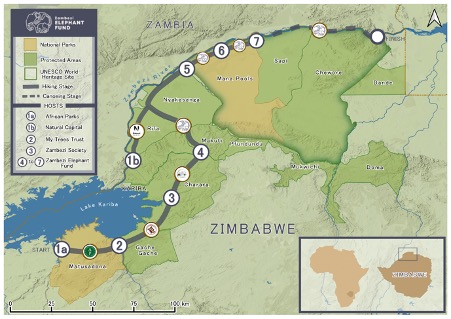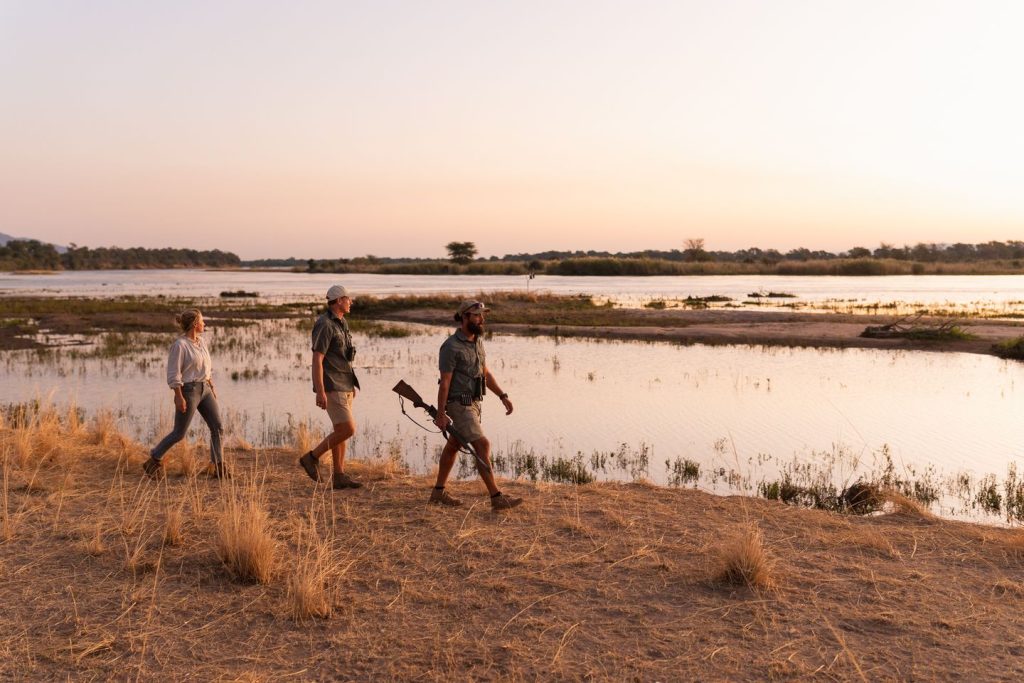– the walk will give participants a deeper understanding of the conservation story, the human story, and the vulnerability of the area, ZEF said.
John Cassim

Harare, Zimbabwe (CZ) – A 30-day walk of over 330 km along the Zambezi valley, aimed at saving biodiversity and wildlife, has gathered momentum.
The journey, which includes walking from Matusadonha to Mana Pools and canoeing from Chikwenya Lodge to Kanyemba, started on June 6, according to the conveners.
Zambezi Valley Walk for Wild Expedition is a novel exercise whose idea was brought about by (renowned safari guide and former warden of both Mana Pools and Matusadona National Parks), John Stevens, and the Zimbabwe Elephant Fund (ZEF), two years ago.
The aim was to bring together conservation stakeholders and enthusiasts in a collaborative exercise that would focus on conservation successes as well as highlight the challenges and needs of the Zambezi Valley landscape.
The expedition is expected to end 30 days later after covering an area of 6.3 million acres of diverse habitat.
It is divided into eight (8) different stages with six (6) different teams; the first four stages are hosted by some of the key ZEF conservation stakeholders, and the final stages are hosted by ZEF.
To date, areas covered include Rifa, Matusadonha, Gache Gache, Charara, and now the teams are in the Mana Pools.

“Overall, ZEF is aiming to share a unique perspective of the work being done on the ground by a range of contributors—those impacting the solutions and success stories as well as adapting to the ongoing needs of this iconic landscape.” James Egremont-Lee, ZEF Executive Director, said
Mana Pools was losing its elephants to poaching at an alarming rate a few years ago.
In 2015, John Stevens was motivated by the total eradication of wild rhino he had witnessed in the area in the 1980s and decided to take action in case such devastation happened to elephants as well.
This led to the formation of the Zambezi Elephant Fund (ZEF), and with efforts by the Zimbabwe Parks and Wildlife Management Authority (ZimParks), assisted by a range of conservation partners on the ground through donors, the elephant population in the lower Zambezi Valley is now stable.
As part of ongoing efforts to ensure momentum remains, the Zambezi Elephant Fund invited a range of conservation participants to take part in a novel collaborative (walking) adventure.
“Seeing the world’s largest land mammal roam free in the heart of the Zambezi Valley in Zimbabwe is a unique privilege, especially for conservation organisations such as the Zambezi Elephant Fund and its supporters.
This is always a reminder of just how critical it is to continue to protect elephants, other wildlife, and their habitat in one of the world’s most important biodiverse landscapes,” James added.
ZEF is collaborating with:
- African Parks: ecosystem protection, community, and government partnership in support of Matusadona National Park
- Natural Capital is a conservation investor in the Rifa concession.
- The Zambezi Society: law enforcement, biodiversity advocacy, ranger support, human-wildlife co-existence
- My Trees Trust: woodland restoration within communities, preservation of habitat, and assisting community resilience
- Flying for Wildlife: aerial monitoring and surveillance, data collection
ZimParks and a wide range of safari operators and concession leaseholders have also facilitated the expedition’s passage through the landscape, as this promises to be an eye-opener for both first-time and lifelong visitors who are taking part.
“Travelling through the most remote sections of the valley and taking in the spectacle of nature both on foot and by canoe will enable participants to gain a deeper understanding and appreciation of the conservation story, the human story, and the vulnerability of the area,” the ZEF statement read.
The goal of the expedition is to encourage a wide range of participants to spend time immersed in the landscape, with the opportunity to envision what the sustainable future of this iconic valley could look like if resources were combined effectively.
scape, with the opportunity to envision what the sustainable future of this iconic valley could look like if resources were combined effectively.
